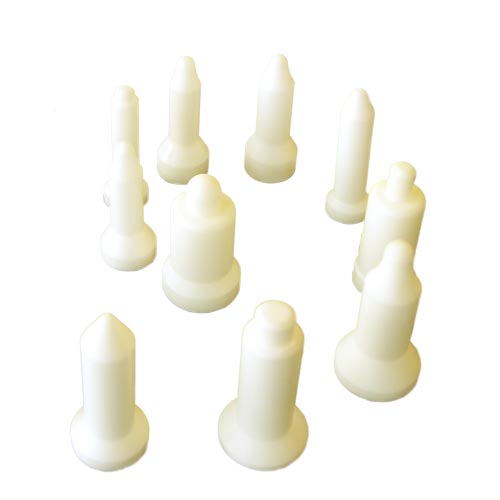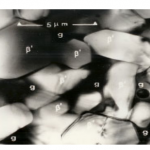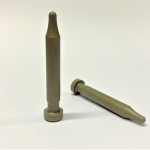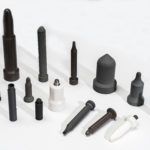Zirconium dioxide (ZrO2) is one of the most well-characterised ceramic materials on earth. It occurs naturally in the mineral baddeleyite, which primarily adopts a monoclinic crystalline structure: one of the three primary forms of the material. The most widely-known form of zirconia is the cubic crystal phase which often serves as a cost-effective diamond substitute. However, estimates suggest that demand for zirconia ceramics accounts for as much as 54% of the worldwide zirconium market[1].
Engineered zirconia ceramics exhibit high strength and superior fracture toughness qualities to industrial alumina (Al2O3). However, zirconium dioxide is relatively thermally unstable and will transition to different crystalline phases at high temperature thresholds. These thermally-induced phase changes can cause flaws to develop in the material, subverting its outstanding mechanical qualities.
Technical zirconia ceramics are subsequently partially-stabilised with a regent like yttria (Y2O3), which helps to maintain the outstanding mechanical qualities up to maximum operating temperatures of approximately 1000°C (1832°F). Hardness is one of the key properties that makes yttria-stabilised zirconia ceramics so desirable.
Explaining Hardness
Hardness is a mechanical quantity that defines how well a material retains its structure in response to certain stressors, typically friction or indentation. It is closely linked to the intermolecular strength of atoms within the material’s crystal lattice. Yet it is affected by a wide range of additional mechanical properties including ductility and toughness. While hardness defines a material’s resistance to various forms of deformation, indentation testing has arisen as the accepted method for testing the property in engineering sectors.
We explored the Vickers and Rockwell scales of microhardness testing in our previous blog post: Insight into the Hardness of Silicon Nitride. The same principles outlined in that article are applied to test the hardness of zirconia ceramics and quantify it as a function of the load over the indenter’s surface area (Kg/mm2 or GPa)
The Importance of Hardness
Hardness is a measure of a material’s ability to withstand impacting and abrasive forces, yet it also occupies a unique mechanical intersection between toughness and strength. Zirconia ceramics are extremely tough with outstanding impact resistance qualities. This denotes a balance between hardness, toughness, and strength which enables zirconia ceramics to withstand extremely high amounts of friction.
As a result, zirconia ceramics are often diagnosed for metalworking and machining applications. They are commonly used to engineer weld location pins and captive nuts due to their exceptional wear-resistant capabilities.
International Syalons supplies a range of zirconia ceramics under the Zircalon product family. These display distinct thermomechanical qualities, with high hardness properties.
- Zircalon 5: hardness value of 13.24 GPa.
- Zircalon 10: hardness value of 13.24 GPa.
- Zircalon 20: hardness value of 11.77 GPa.
- Zircalon 30: hardness value of 12.13 GPa.
Zirconia Ceramics from International Syalons
International Syalons is one of the UK’s leading manufacturers and suppliers of technical ceramics for industrial applications. If you would like to learn more about our zirconia ceramics, read our previous blog post: An Introduction to Zirconia. Otherwise, contact us directly with any questions.
[1] https://www.ceramicindustry.com/articles/93863-ceramics-account-for-54-of-zirconium-demand



